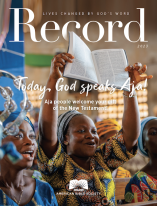St. Samuel's Spirit Resurrected by Witch in Scripture?
Answers to your Scripture questions
The 1 Samuel 28.3-25 narrative provides no details about the rituals or conjuring process.
In the ancient world, the belief in magic, sorcery and witchcraft was common. Witchcraft and consulting the dead was forbidden by the Law of Moses (Leviticus 19.26, 31), because relying on spirits or powers other than God showed a lack of faith and trust in the one true God (see also Deuteronomy 18.9-14). Those who practiced witchcraft or sorcery were to be put to death (Exodus 22.18; Leviticus 20.27). King Saul had expelled all such persons from the land (1 Samuel 28.3, 9); yet, when King Saul was afraid of the approaching Philistine army, he did not pray to God for help. Instead, he violated his own prohibition and broke the law forbidding witchcraft by asking a woman from Endor, who talked to spirits, to call on Samuel, who had died some time before (1 Samuel 25.1; 28.3).
In ancient Israel, it was believed that when people died their souls went down and stayed in the dark underworld called “Sheol.” When the medium invoked the spirit of Samuel, it would have been assumed that his spirit came from Sheol, which was understood to be in the center of the earth. It was also believed that the spirits of the dead hovered around the body for a year after they died; this made the spirit of the dead person amenable to being summoned during this time.
Thanks to the support of our faithful financial partners, American Bible Society has been engaging people with the life-changing message of God’s Word for more than 200 years.
Help us share God's Word where needed most.
Sign up to stay in touch with how God is changing lives with his Word!








